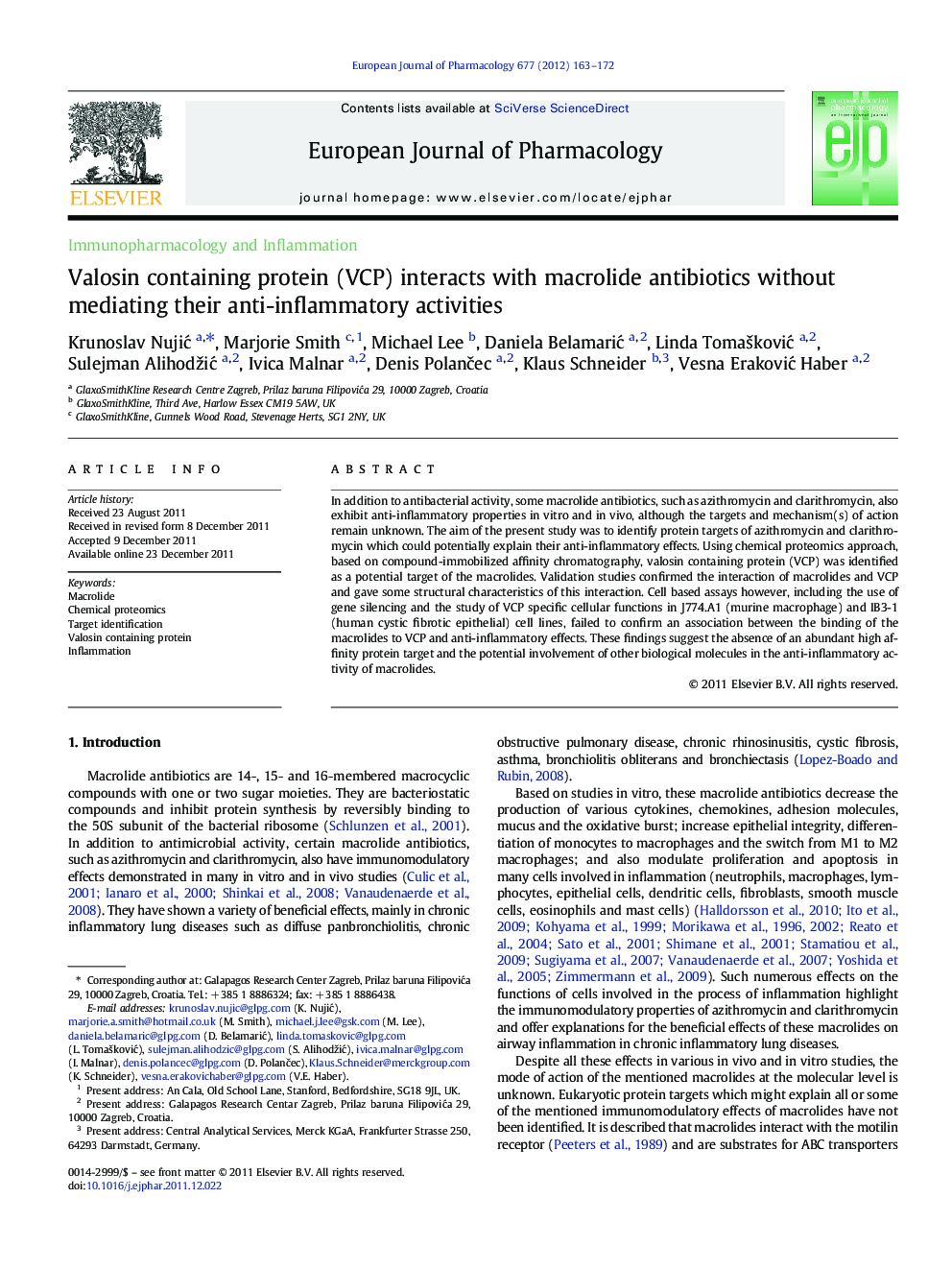| Article ID | Journal | Published Year | Pages | File Type |
|---|---|---|---|---|
| 2532458 | European Journal of Pharmacology | 2012 | 10 Pages |
Abstract
In addition to antibacterial activity, some macrolide antibiotics, such as azithromycin and clarithromycin, also exhibit anti-inflammatory properties in vitro and in vivo, although the targets and mechanism(s) of action remain unknown. The aim of the present study was to identify protein targets of azithromycin and clarithromycin which could potentially explain their anti-inflammatory effects. Using chemical proteomics approach, based on compound-immobilized affinity chromatography, valosin containing protein (VCP) was identified as a potential target of the macrolides. Validation studies confirmed the interaction of macrolides and VCP and gave some structural characteristics of this interaction. Cell based assays however, including the use of gene silencing and the study of VCP specific cellular functions in J774.A1 (murine macrophage) and IB3-1 (human cystic fibrotic epithelial) cell lines, failed to confirm an association between the binding of the macrolides to VCP and anti-inflammatory effects. These findings suggest the absence of an abundant high affinity protein target and the potential involvement of other biological molecules in the anti-inflammatory activity of macrolides.
Related Topics
Life Sciences
Neuroscience
Cellular and Molecular Neuroscience
Authors
Krunoslav NujiÄ, Marjorie Smith, Michael Lee, Daniela BelamariÄ, Linda TomaÅ¡koviÄ, Sulejman AlihodžiÄ, Ivica Malnar, Denis PolanÄec, Klaus Schneider, Vesna ErakoviÄ Haber,
